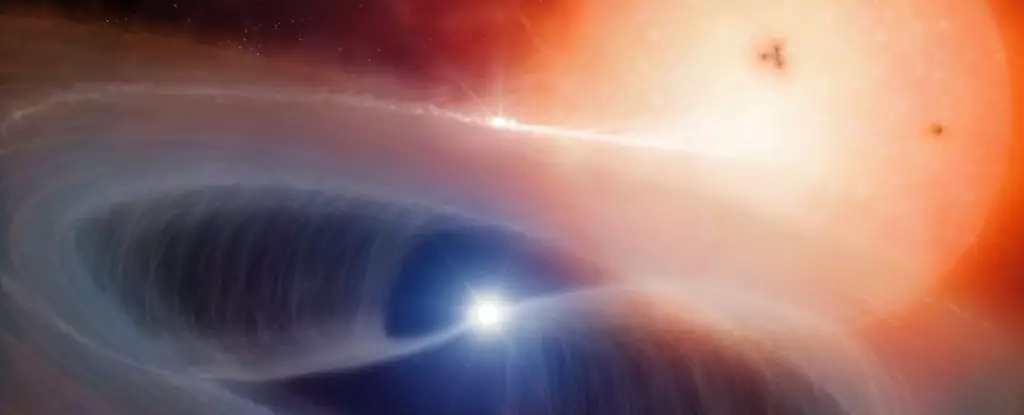The cosmos has always captivated the human imagination, and among its many enigmas, one of the most profound is the origin of metals. While it is widely acknowledged that stars forge metals through immense cosmic processes, pinpointing the specific stars and the proportions of elements produced remains a complex puzzle. Recent advancements in astronomical research have shed light on a particular category of supernovae—Type Ic supernovae. Led by a team of researchers from Adam Mickiewicz University in Poland, including Martín Solar and Michał Michałowski, a groundbreaking revelation emerges: the progenitors of these explosive stellar events are not merely massive isolate stars but often include less massive stars intertwined with binary companions.
Type Ic supernovae represent a fascinating bracket of stellar explosions marked by the absence of hydrogen and helium in their aftermath. This absence distinguishes them from other supernova types and raises questions about the nature of their progenitor stars. When massive stars reach the end of their life cycles, they undergo a transformation where the elements within their cores have fused into exceedingly heavy materials. As the nuclear fusion processes begin to falter and cease to produce necessary energy, an imbalance occurs, leading to catastrophic gravitational collapse. The core collapses into either a neutron star or a black hole, while the outer shell explodes violently, ejecting even heavier elements into the cosmos.
The missing elements in Type Ic supernovae have led scientists to propose two primary theories. One theory suggests that an extremely massive star, between 20 to 30 times the mass of the Sun, produces potent stellar winds that can blow away its outer hydrogen and helium layers. Alternatively, a less massive star with a nearby binary companion may siphon off these elements prior to the supernova event. Both scenarios imply that the progenitor star’s composition is fundamentally altered before the explosion, leading to the elemental deficiency observed in the outcomes of Type Ic supernovae.
Research into the origins of Type Ic supernovae gained momentum through comprehensive observational programs, such as the PHANGS project, which utilizes cutting-edge technology to map the gas structures from which stars are born. Michałowski’s team combined this data with new observational insights to explore the gas remnants left behind in the aftermath of supernovae. The analysis targeted the molecular gas composition, specifically looking at the abundance of molecules such as hydrogen to gauge the initial mass of the progenitor stars.
What emerged from this intricate investigation was unexpected but enlightening. Contrary to preconceptions that Type Ic progenitors would be overwhelmingly massive stars, the data indicated a different narrative. The molecular signatures revealed a connection with less massive stars—those in a mass range significantly lower than previously assumed.
The pivotal role of binary companions is crucial to understanding the fate of these less massive progenitor stars and their eventual supernova outcomes. Often, the companion star continues to exist post-explosion, albeit at an altered trajectory and velocity, once it is “punted” away by the supernova event. This duality not only presents insights into individual stellar evolution but also reframes our understanding of the contributions to cosmic element production, particularly versatile elements like carbon.
Research indicates that supernovae involving binaries significantly boost the output of crucial elements, further elaborating the notion that a sizeable portion of the universe’s carbon content can be traced back to Type Ic supernovae. Hence, as scientists dig deeper into the cosmic recycling process, they anticipate that a broader investigation into supernova remnants will yield richer understandings of the factors influencing star formation and their subsequent explosive fates.
The revelations from this research signify a departure from traditionally held views of massive stars as isolated entities producing unique cosmic events. Michałowski’s assertion regarding the complexity of massive star evolution highlights the increasingly intricate dynamics that govern stellar life cycles. As the field of astrophysics progresses, further exploration of the diversity of supernova progenitor stars, along with their environments and binary relationships, becomes critical.
Studying an expanded array of supernovae will not only refine our comprehension of these monumental explosions but will also provide insights into the broader narrative of chemical enrichment in the universe. Whether correlations exist between emission line spectrums, host galaxy characteristics, and progenitor star behavior remains an enticing avenue for future research. Essentially, every new discovery serves as another piece of a colossal cosmic jigsaw, bringing us closer to appreciating the intricate web of interactions that forge the building blocks of our universe.


Leave a Reply